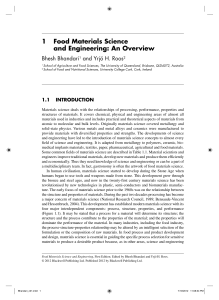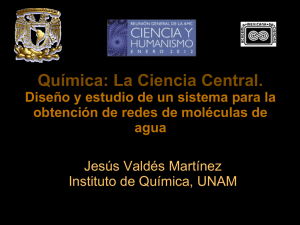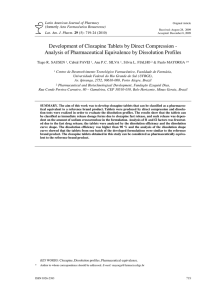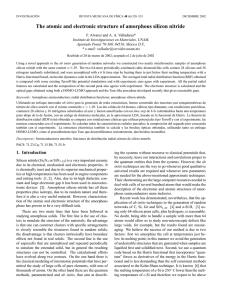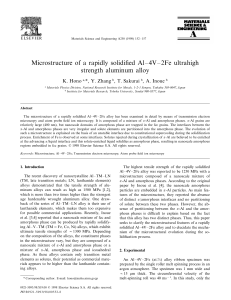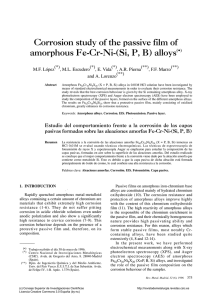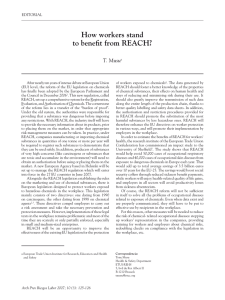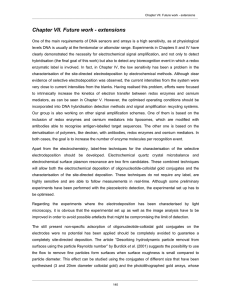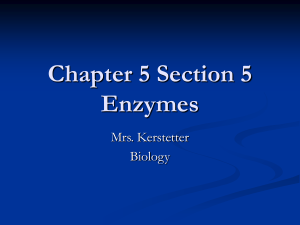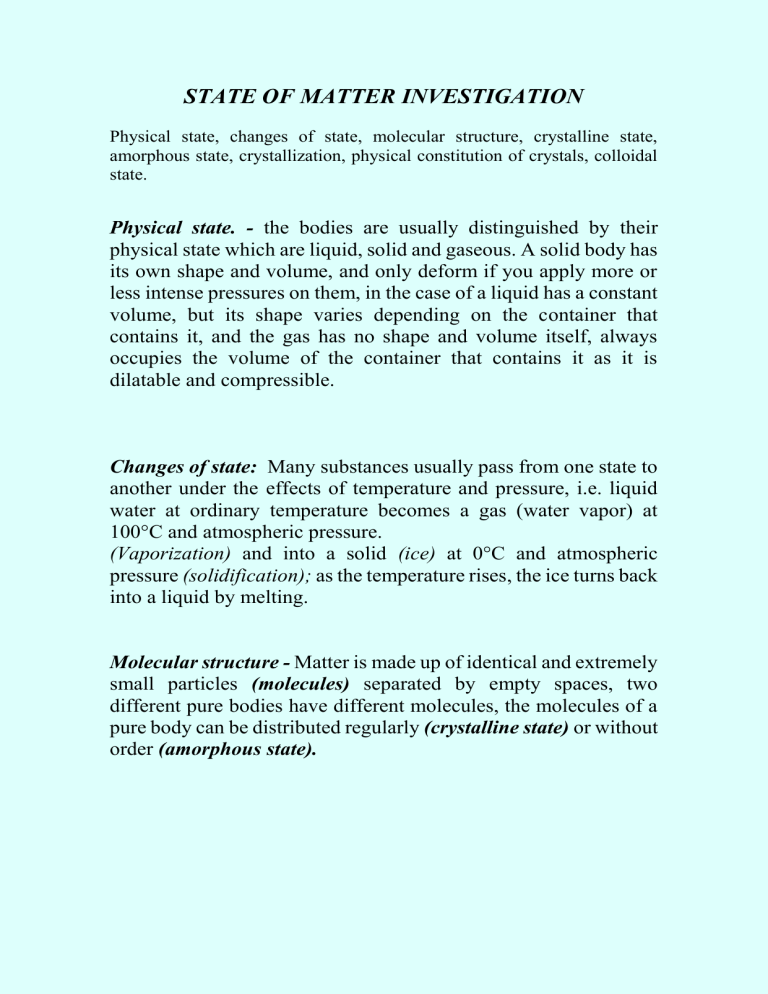
STATE OF MATTER INVESTIGATION Physical state, changes of state, molecular structure, crystalline state, amorphous state, crystallization, physical constitution of crystals, colloidal state. Physical state. - the bodies are usually distinguished by their physical state which are liquid, solid and gaseous. A solid body has its own shape and volume, and only deform if you apply more or less intense pressures on them, in the case of a liquid has a constant volume, but its shape varies depending on the container that contains it, and the gas has no shape and volume itself, always occupies the volume of the container that contains it as it is dilatable and compressible. Changes of state: Many substances usually pass from one state to another under the effects of temperature and pressure, i.e. liquid water at ordinary temperature becomes a gas (water vapor) at 100°C and atmospheric pressure. (Vaporization) and into a solid (ice) at 0°C and atmospheric pressure (solidification); as the temperature rises, the ice turns back into a liquid by melting. Molecular structure - Matter is made up of identical and extremely small particles (molecules) separated by empty spaces, two different pure bodies have different molecules, the molecules of a pure body can be distributed regularly (crystalline state) or without order (amorphous state). Crystalline state - the crystalline state is characterized by being anisotropic (different in different directions of space).the physical properties of a crystalline body will be the same in parallel directions of the body having identical particle distribution, crystalline solids are melted by net fusion. Amorphous state - the amorphous state is characterized by isotropy, the molecules are distributed without order and the properties of the body considered are identical in all directions, the amorphous solids can be assimilated to liquids of high viscosity, when they melt, they do it by pasty melting, i.e. by progressive softening. Crystallization - crystallization can be achieved by melting, sublimation and dissolution. By fusion: the body once melted, is allowed to cool slowly, until a solid surface crust is formed, when breaking this last one and when decanting the remaining liquid the crystals appear. By sublimation: the substance when heated produces vapors that condense on the cold walls of the container in which it is found (iodine and naphthalene sublimate in this way). By dissolution: the substance is dissolved and the solution is evaporated or cooled, crystallization by dissolution allows crystals of a pure species to be separated from other bodies thanks to the difference in solubility (fractional crystallization). Physical construction of crystals - X-ray diffraction has made it possible to determine the distribution of matter in crystalline substances, the particles also in the center of the meshes of the faces as well as at the midpoints of the edges, in electrolytes, ions, dissociate in the crystal itself and occupy the above-mentioned positions. Colloidal state - colloidals are substances consisting of very small particles (micelles), which consist of a considerable number of atoms and can be considered as very heavy and bulky molecules or as agglomerations of molecules. Colloidals do not usually crystallize, unlike other substances, which are therefore called crystalloids. Ordoñez Adirai Atziri 6 IV12 sources of information PRINCIPLES OF PHYSICS BOOK: INTRODUCTION COURSE " Braun Eliezer, Beltran Virgilio” FUNDAMENTALS OF PHYSICS BOOK "Guerra Cardenas Carlos". THE BOOK OF PHYSICS "Colin Stuart".
